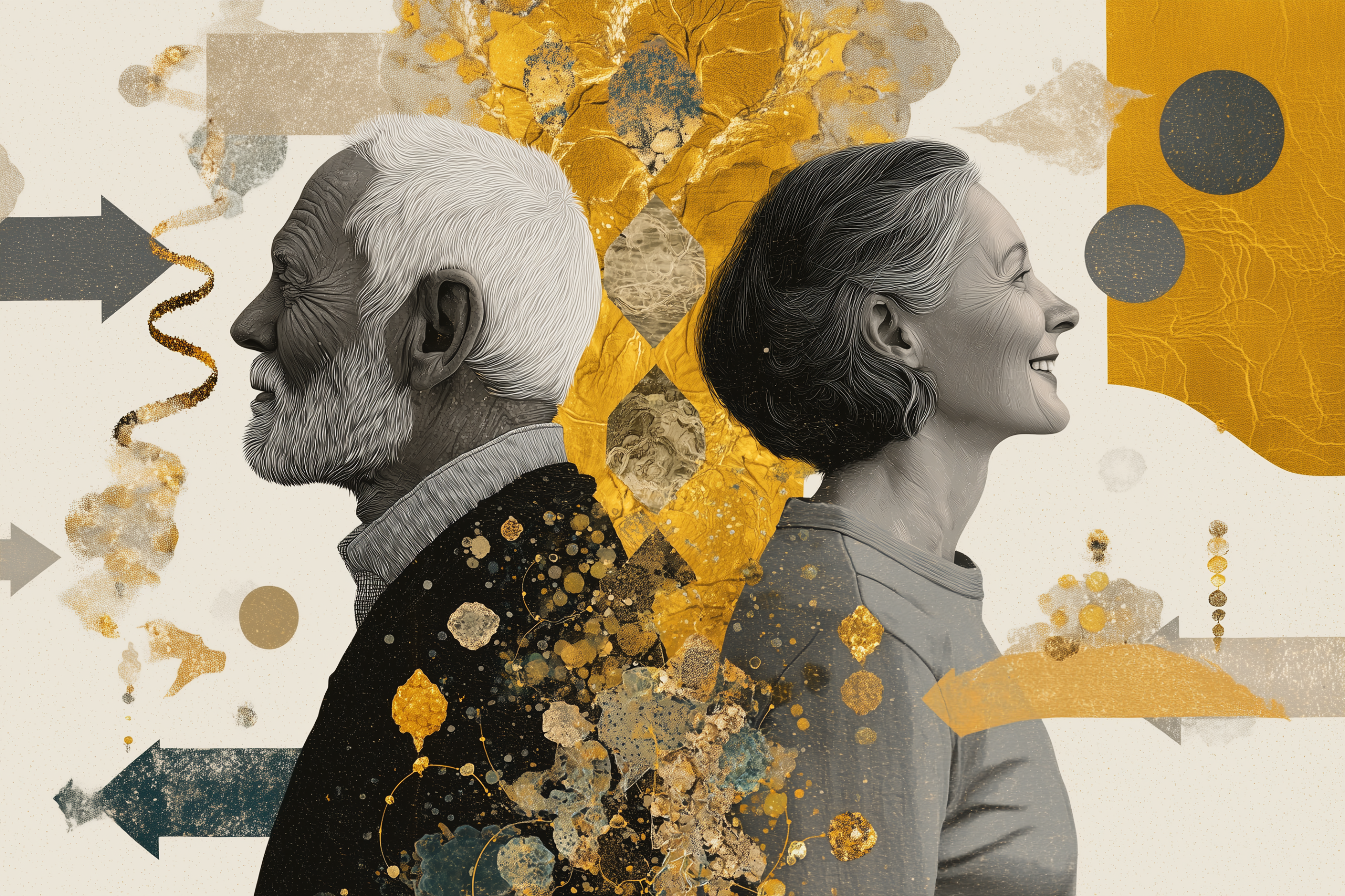You don’t need Bryan Johnson’s budget to bend your biological age curve, you need tomorrow morning’s sunrise.
Note: This article is for educational and informational purposes only. See full disclaimer at the end.
You’ve read about the longevity revolution. You know what the pioneers are doing. You understand the daily practices, the family dynamics, the technology, and the psychology. Now what?
Here’s what most people miss: longevity isn’t about choosing between Bryan Johnson’s $2 million protocol and doing nothing. It’s about understanding that every single choice you make today—from your morning routine to your evening wind-down—is either adding to or subtracting from your biological reserves.
The most powerful realization from our exploration of longevity science isn’t that we need expensive interventions. It’s that the gap between doing nothing and doing the basics is massive, while the gap between the basics and extreme optimization narrows dramatically. This means you can capture 80% of longevity benefits with practices that cost nothing and take minutes.
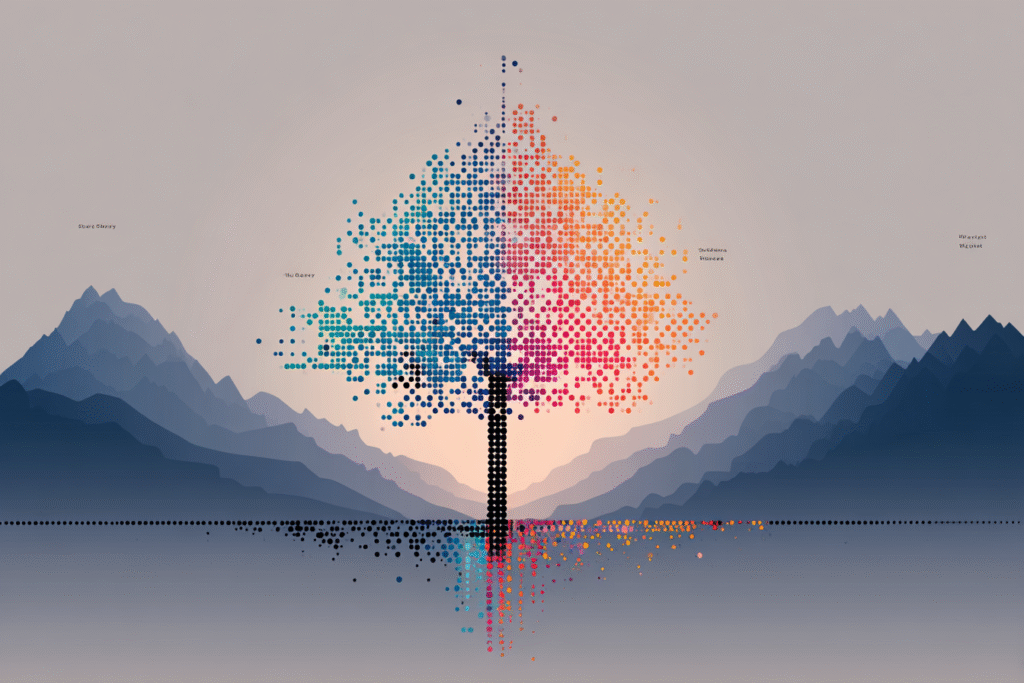
The Three Layers of Your Longevity Strategy
Think of your personal longevity plan as three concentric circles, each building on the last. You don’t need to master all three immediately—even implementing the innermost circle will transform your biological age trajectory.
The Foundation Circle: Non-Negotiable Daily Practices
These are the practices that, according to Blue Zones research and longevity studies, deliver the highest return on investment. They require no special equipment, no subscriptions, and no expertise—just consistency.
Your morning starts with sunlight, not screens. Within 30 minutes of waking, you expose yourself to natural light, even if it’s cloudy. This single practice, as Andrew Huberman’s research at Stanford demonstrates, cascades into better sleep, improved mood, and optimized circadian biology [1].
Movement becomes non-negotiable, but not in the way fitness culture preaches. The Danish study of 116,000 people showed that just 90 minutes of weekly walking reduces all-cause mortality by 14% [2]). You’re not training for marathons; you’re maintaining what longevity researchers call “functional fitness”—the ability to carry groceries, climb stairs, and play with grandchildren decades from now.
Your eating window naturally compresses. Not through rigid intermittent fasting protocols, but through the simple practice of closing your kitchen after dinner. The research is unequivocal: time-restricted eating improves metabolic health, reduces inflammation, and may extend lifespan [3].
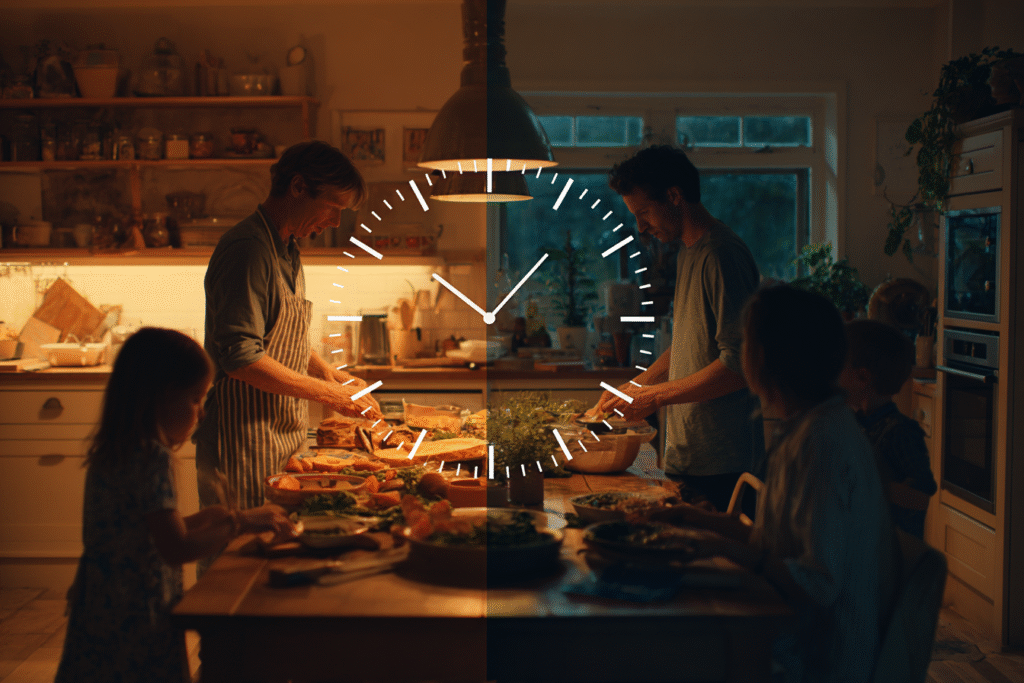
Social connection isn’t optional—it’s medical. The Harvard Study of Adult Development, following subjects for over 80 years, found that relationship quality is the strongest predictor of happiness and health in later life [4]. This doesn’t mean forced social activities. It means one genuine conversation daily, one meaningful connection maintained.
Sleep becomes sacred. Not through expensive optimization but through simple consistency: same bedtime, same wake time, cool room, dark environment. Matthew Walker’s research shows that sleep regularity matters more than duration for longevity [5].
The Optimization Circle: Evidence-Based Enhancements
Once the foundation is solid—and only then—you can layer in targeted optimizations. These require modest investment but deliver measurable returns.
Biological age testing becomes your compass. An annual epigenetic age test (now under $400) gives you objective feedback on whether your interventions are working [6]. Think of it like a credit score for your cells—you can’t improve what you don’t measure.
Strategic supplementation replaces shotgun approaches. Instead of dozens of pills, you focus on what research consistently validates: vitamin D if you’re deficient (most people are), omega-3s for inflammation, perhaps NAD+ precursors if you’re over 40. The key is testing, not guessing.
Exercise becomes periodized. You’re not just moving; you’re deliberately training different energy systems. Zone 2 cardio for mitochondrial health (the pace where you can still hold a conversation), resistance training for muscle preservation, high-intensity intervals for VO2 max. Peter Attia’s research shows this combination optimizes what he calls the “Centenarian Decathlon”—the physical tasks you want to be able to do in your final decade [7].
Stress becomes data. A continuous glucose monitor, now available over-the-counter for under $100, reveals how your body responds to different foods, sleep patterns, and stressors. This isn’t about obsessing over numbers—it’s about understanding your unique metabolic fingerprint.

The Acceleration Circle: Advanced Interventions
For those who’ve mastered the first two circles and want to push the boundaries, advanced interventions offer additional gains—though with diminishing returns relative to cost and complexity.
This is where medical partnerships matter. Regular biomarker panels tracked over time, hormone optimization under medical supervision, targeted therapies based on genetic testing. You’re not following Bryan Johnson’s protocol—you’re creating your own based on your unique biology, resources, and goals.
The Cold Truth About Complexity
Here’s what the longevity influencers won’t tell you: the more complex your protocol, the more likely you are to abandon it. The research on habit formation is clear—simplicity predicts sustainability [8].
The people actually living to 100 in Blue Zones aren’t tracking biomarkers or taking 150 supplements. They’re walking to the market, eating dinner with family, tending gardens, maintaining purpose. They’ve solved for consistency, not optimization.
Your Personal Implementation Map
Instead of a prescriptive plan, think of this as choosing your own adventure based on where you are today.
If you’re doing nothing: Start with morning sunlight and a 10-minute walk. Just these two practices will shift your biological age trajectory.
If you’re somewhat active: Add time-restricted eating and one strength training session weekly. Focus on consistency over intensity.
If you’re already health-conscious: Layer in biological age testing and data-driven adjustments. Use technology to refine, not replace, your intuition.
If you’re optimization-oriented: Consider medical partnerships and advanced testing, but never at the expense of the fundamentals.
The multiplication effect changes everything when you stop thinking individually. Every positive change you make influences those around you. Children absorb parents’ health habits. Partners synchronize their circadian rhythms. Friends influence each other’s food choices. Your personal longevity plan inevitably becomes a family and community longevity plan.
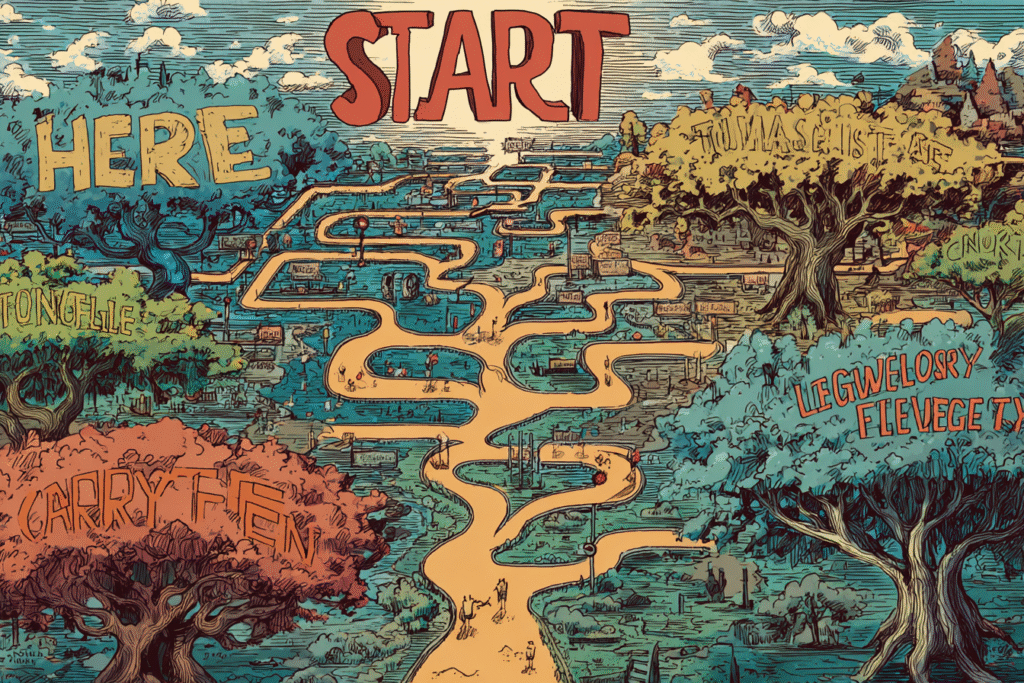
The Psychology That Makes It Stick
The research on longevity mindset reveals a paradox: those who focus on adding years to life often fail, while those who focus on adding life to years succeed. The Harvard optimism studies showing 15% increased lifespan weren’t about forced positivity—they were about finding meaning in daily actions [9].
This shifts your longevity plan from a list of restrictions to a practice of expansion. You’re not limiting yourself to live longer; you’re expanding your capacity to engage fully with life at every age.
The Japanese concept of ikigai—your reason for being—emerges not from grand purpose but from small daily pleasures. The Okinawans who live past 100 don’t have elaborate mission statements. They have vegetable gardens, morning walking groups, grandchildren to care for [10].
Technology as Amplifier, Not Solution
The revolution in longevity technology—from AI health coaches to biological age testing—offers unprecedented insight into our biology. But technology amplifies; it doesn’t replace. A continuous glucose monitor showing perfect levels means nothing if you’re socially isolated. An optimal exercise protocol fails if it destroys your joy in movement.
Use technology to understand your patterns, then trust your body’s wisdom. The goal isn’t to gamify your biology but to develop what researchers call “interoception”—the ability to sense and respond to your body’s signals.
The Time Horizon That Changes Everything
Most health advice focuses on immediate benefits: lose weight for summer, get fit for an event. Longevity thinking operates on a different timeline. You’re not optimizing for next month; you’re investing in your 80-year-old self.
This longer horizon paradoxically makes everything easier. You don’t need dramatic changes today. Small improvements compounded over decades create extraordinary results. A 1% improvement weekly becomes a 67% improvement yearly. Marginal gains, sustained over time, rewrite your biological destiny.
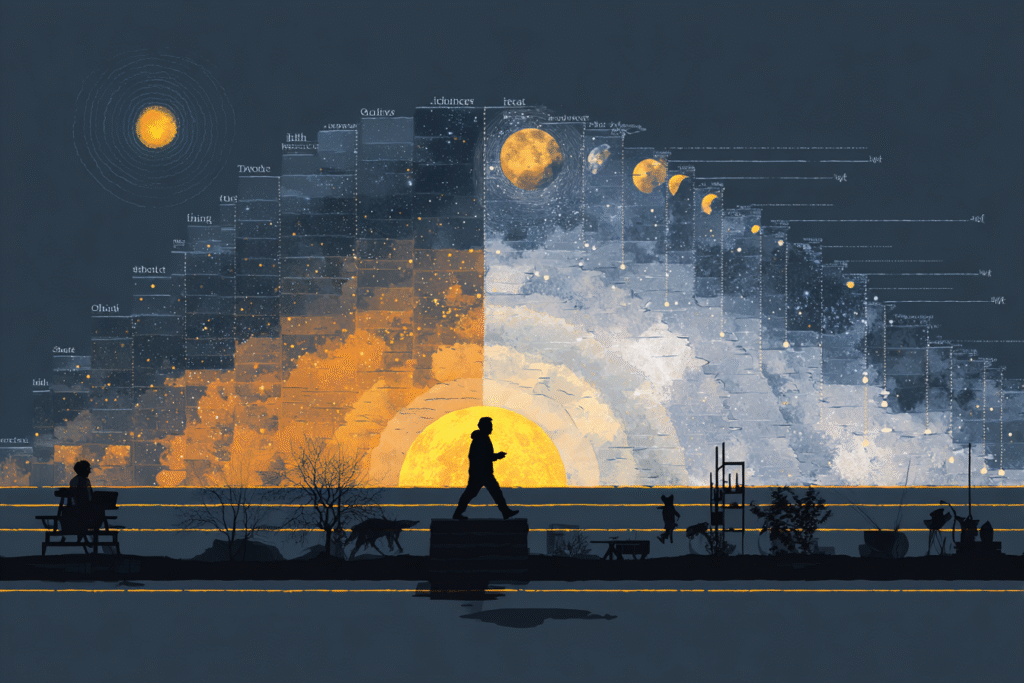
Starting Tomorrow Morning
Your personal longevity plan doesn’t begin with a complex protocol or expensive testing. It begins tomorrow morning with a simple question: What one practice, sustained daily, would most improve my odds of a long, vibrant life?
For most people, the answer is surprisingly simple: a morning walk in sunlight. This single practice triggers a cascade of biological benefits—circadian rhythm optimization, vitamin D synthesis, cardiovascular conditioning, stress reduction, often social connection if you walk with others.
From that foundation, you build. Not through revolution but through evolution. Each month, you might add one sustainable practice. By year’s end, you’ve transformed your biological age trajectory not through extreme measures but through the patient accumulation of life-giving habits.
The longevity revolution isn’t about choosing between doing nothing and doing everything. It’s about understanding that small, consistent actions compound into extraordinary outcomes. Your personal longevity plan isn’t a destination—it’s a direction. And that direction is always toward more life, not just more years.
See you in the next insight.
Comprehensive Medical Disclaimer: The insights, frameworks, and recommendations shared in this article are for educational and informational purposes only. They represent a synthesis of research, technology applications, and personal optimization strategies, not medical advice. Individual health needs vary significantly, and what works for one person may not be appropriate for another. Always consult with qualified healthcare professionals before making any significant changes to your lifestyle, nutrition, exercise routine, supplement regimen, or medical treatments. This content does not replace professional medical diagnosis, treatment, or care. If you have specific health concerns or conditions, seek guidance from licensed healthcare practitioners familiar with your individual circumstances.
References
The references below are organized by study type. Peer-reviewed research provides the primary evidence base, while systematic reviews synthesize findings.
Peer-Reviewed / Academic Sources
- [1] Huberman Lab. (2024). Time-Restricted Feeding for Health and Longevity: The Science and Practice. Stanford Medicine. https://hubermanlab.com/time-restricted-feeding-for-health-and-longevity-the-science-and-practice/
- [2] European Society of Cardiology. (2023). 90 minutes exercise a week reduces early death risk. ESC Press Release. https://www.escardio.org/The-ESC/Press-Office/Press-releases/90-minutes-exercise-a-week-reduces-early-death-risk
- [3] National Institute on Aging. (2024). Research on intermittent fasting shows health benefits. NIA Research Highlights. https://www.nia.nih.gov/news/research-intermittent-fasting-shows-health-benefits
- [4] Harvard Health Publishing. (2023). The secret to happiness? Here’s some advice from the longest-running study on happiness. Harvard Medical School. https://www.health.harvard.edu/blog/the-secret-to-happiness-heres-some-advice-from-the-longest-running-study-on-happiness-2017100512543
- [5] Sleep Foundation. (2024). Why Do We Need Sleep? Sleep Science and Health. https://www.sleepfoundation.org/how-sleep-works/why-do-we-need-sleep
Industry / Technology Sources
- [6] Lifespan.io. (2024). Epigenetic Age Testing: Measuring Biological Age. Life Extension Advocacy Foundation. https://www.lifespan.io/news/epigenetic-age-testing-measuring-biological-age/
- [7] Peter Attia MD. (2024). Move: The Most Powerful Longevity Drug. The Drive Podcast. https://peterattiamd.com/move-the-most-powerful-longevity-drug/
- [8] James Clear. (2023). Habit Stacking: How to Build New Habits by Taking Advantage of Old Ones. Atomic Habits. https://jamesclear.com/habit-stacking
Government / Institutional Sources
- [9] Harvard Gazette. (2019). Harvard study, almost 80 years old, shows how to live a healthy and happy life. Harvard University. https://news.harvard.edu/gazette/story/2019/04/harvard-study-almost-80-years-old-shows-harvard-mens-health-study/
- [10] Blue Zones. (2023). Okinawa, Japan: Longevity Lessons from the Island of Immortals. Blue Zones Exploration. https://www.bluezones.com/exploration/okinawa-japan/
